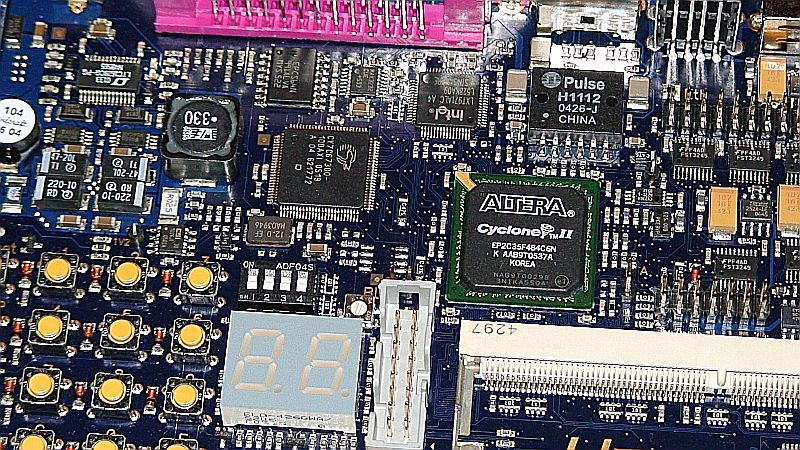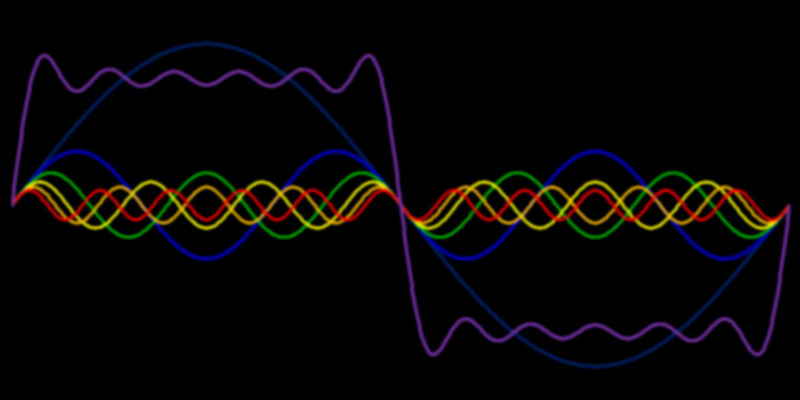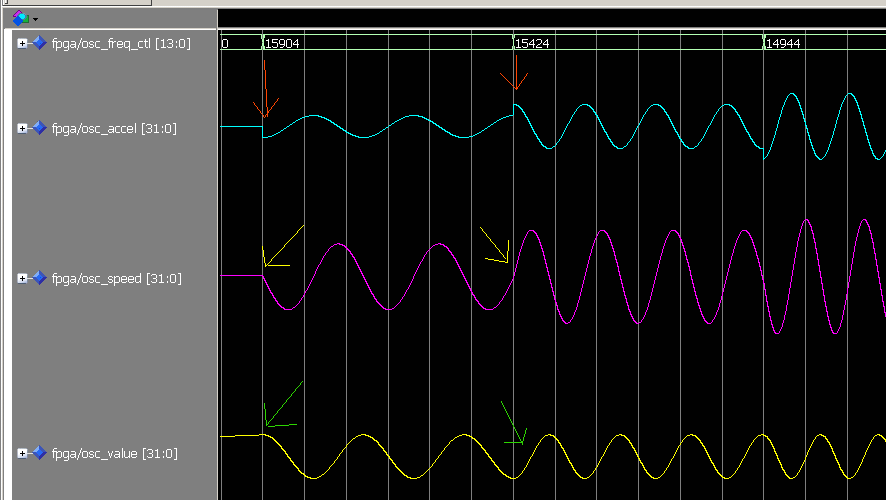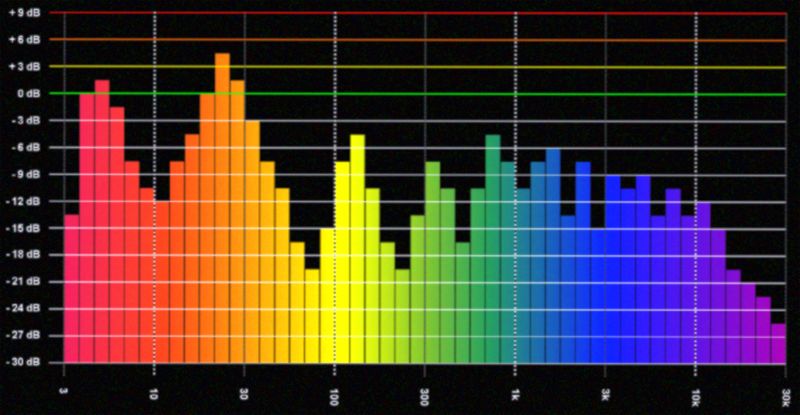| |
Cyclone 2
from
Gleichmann
Research
23 wave forms
60 MHz
24kHz bandwidth |
Altera Cyclone 2 System

Additive Synthesis
Module

This module is based on additive
sound synthesis. Several sine waves, matching the intended generator
frequency, are generated and additively superimposed. The principle
corresponds to the Fourier and Laplace analysis, according to
which it is possible to generate practically any waveform from
simple sine waves.
The first module was used in an industrial
application to generate and modify multiple waveforms in parallel
in real time. It can be used for sound synthesis with slight
changes by e.g. band limiting to 24kHz. With other minor changes,
it can be used as a LaPlace waveform generator to generate band-limited
triangles and rectangles as test signals for audio circuits.
Up to 23 waves can be generated in a VHDL module that is available
online.
The module works up to 60 MHz and runs on a current
Cyclone II FPGA chip.
Example 1
To shun issues with alias frequencies in audio systems with
limited sample rate,
pseudo rectangular waves can be used
by super imposing those harmonics which
are still below
nyquists frequency.

band limited rectangle built with sine waves
Example 2
To
create so-called flat-top square waves that approximate
hard-constrained waveforms and maximize the energy of the
signal at a given amplitude, the coefficients can be
optimized to produce very little oscillation and a broad
plateau. Even mathematically strictly monotonic waves with
only one inflection point are possible this way.

optimized band limited flat top waves built with sine waves
Wave Generation
Virtual oscillators are used to generate
the sine waves.

Timing Simulation with ModelSIM
Analysis

Graphical Spectrum Analyzer Appication
|
|